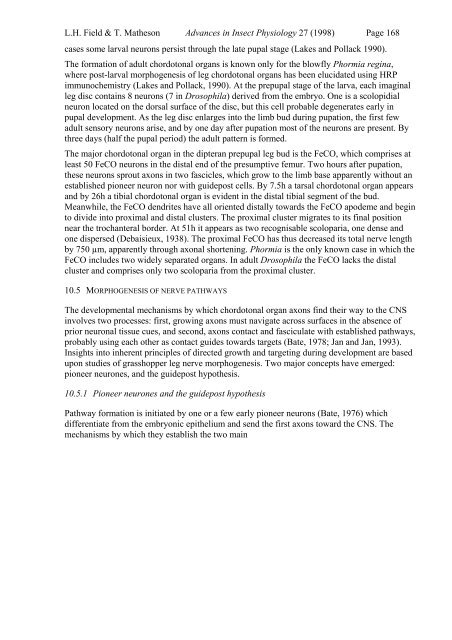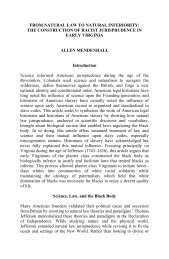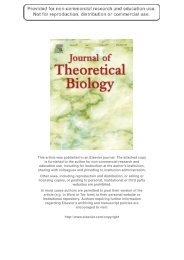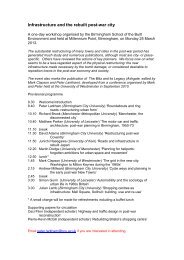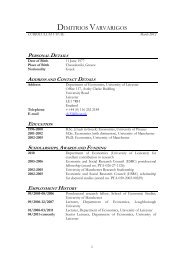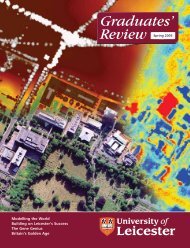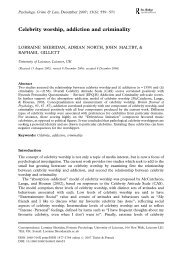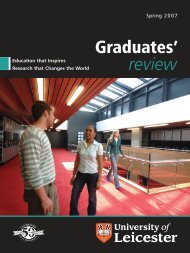Chordotonal Organs of Insects
Chordotonal Organs of Insects
Chordotonal Organs of Insects
Create successful ePaper yourself
Turn your PDF publications into a flip-book with our unique Google optimized e-Paper software.
L.H. Field & T. Matheson Advances in Insect Physiology 27 (1998) Page 168cases some larval neurons persist through the late pupal stage (Lakes and Pollack 1990).The formation <strong>of</strong> adult chordotonal organs is known only for the blowfly Phormia regina,where post-larval morphogenesis <strong>of</strong> leg chordotonal organs has been elucidated using HRPimmunochemistry (Lakes and Pollack, 1990). At the prepupal stage <strong>of</strong> the larva, each imaginalleg disc contains 8 neurons (7 in Drosophila) derived from the embryo. One is a scolopidialneuron located on the dorsal surface <strong>of</strong> the disc, but this cell probable degenerates early inpupal development. As the leg disc enlarges into the limb bud during pupation, the first fewadult sensory neurons arise, and by one day after pupation most <strong>of</strong> the neurons are present. Bythree days (half the pupal period) the adult pattern is formed.The major chordotonal organ in the dipteran prepupal leg bud is the FeCO, which comprises atleast 50 FeCO neurons in the distal end <strong>of</strong> the presumptive femur. Two hours after pupation,these neurons sprout axons in two fascicles, which grow to the limb base apparently without anestablished pioneer neuron nor with guidepost cells. By 7.5h a tarsal chordotonal organ appearsand by 26h a tibial chordotonal organ is evident in the distal tibial segment <strong>of</strong> the bud.Meanwhile, the FeCO dendrites have all oriented distally towards the FeCO apodeme and beginto divide into proximal and distal clusters. The proximal cluster migrates to its final positionnear the trochanteral border. At 51h it appears as two recognisable scoloparia, one dense andone dispersed (Debaisieux, 1938). The proximal FeCO has thus decreased its total nerve lengthby 750 µm, apparently through axonal shortening. Phormia is the only known case in which theFeCO includes two widely separated organs. In adult Drosophila the FeCO lacks the distalcluster and comprises only two scoloparia from the proximal cluster.10.5 MORPHOGENESIS OF NERVE PATHWAYSThe developmental mechanisms by which chordotonal organ axons find their way to the CNSinvolves two processes: first, growing axons must navigate across surfaces in the absence <strong>of</strong>prior neuronal tissue cues, and second, axons contact and fasciculate with established pathways,probably using each other as contact guides towards targets (Bate, 1978; Jan and Jan, 1993).Insights into inherent principles <strong>of</strong> directed growth and targeting during development are basedupon studies <strong>of</strong> grasshopper leg nerve morphogenesis. Two major concepts have emerged:pioneer neurones, and the guidepost hypothesis.10.5.1 Pioneer neurones and the guidepost hypothesisPathway formation is initiated by one or a few early pioneer neurons (Bate, 1976) whichdifferentiate from the embryonic epithelium and send the first axons toward the CNS. Themechanisms by which they establish the two main


